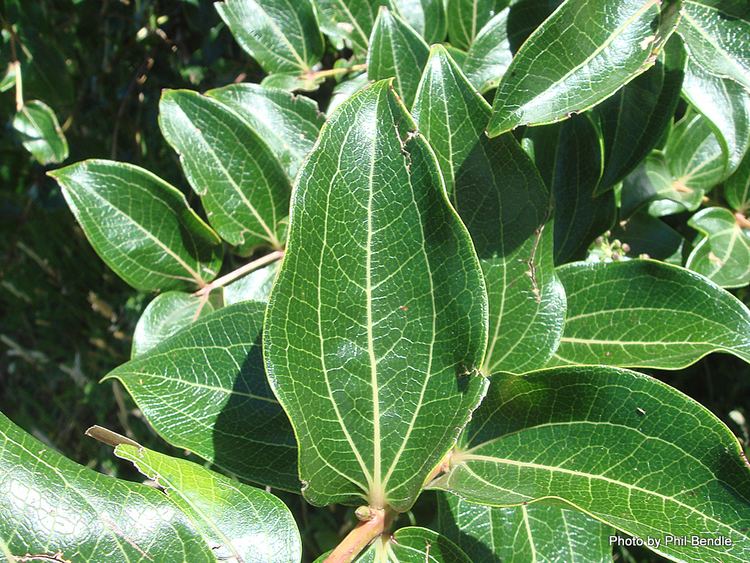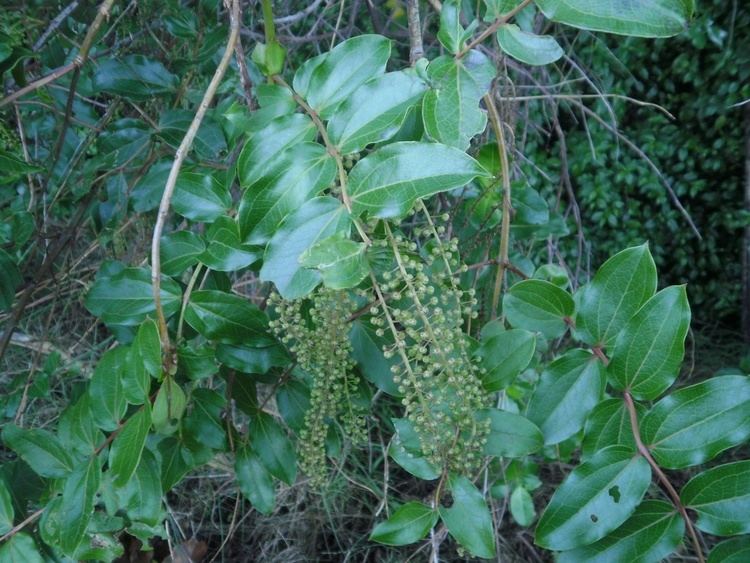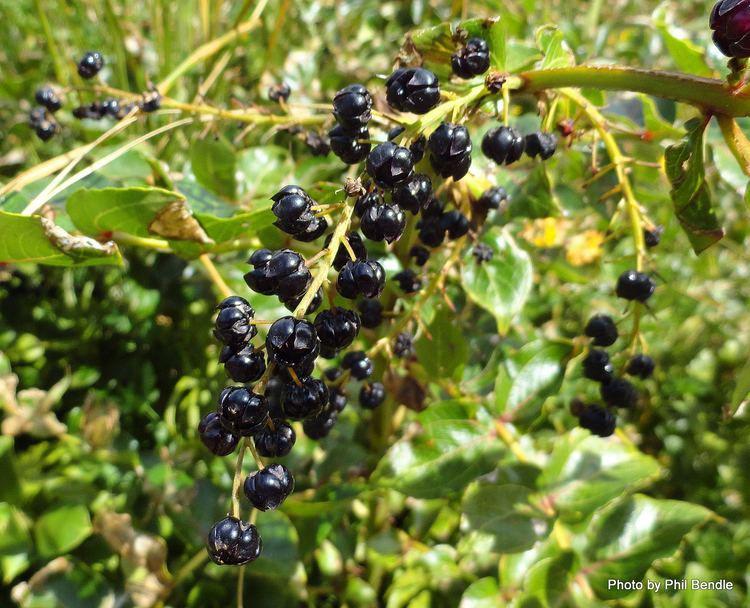Rank Species | ||
 | ||
Similar Coriaria, Scolypopa australis, Coprosma robusta, Myrsine australis, Pseudopanax arboreus | ||
Coriaria arborea, one of several species called tutu, is a common, highly poisonous shrub native to New Zealand.
Contents
C. arborea is found in scrub and open areas from the coast to the hills across the country. A straggling plant, it can grow to 20 ft high. The leaves grow opposite on slender stems while flowers are arranged in drooping racemes.

Tutu is capable of nitrogen fixation.
Toxicity
The toxin tutin is found in all parts of the plant apart from the fleshy flower petals. Tutu has been responsible for the most cases of livestock poisoning by any New Zealand plant. Dogs and even two circus elephants have been poisoned by the plant. On occasion human poisoning has occurred through consuming honey where bees had interacted with the plant.

In 2014, a man tramping in Auckland, New Zealand looking to try the taste of the plant supplejack, mistakenly attempted to eat an asparagus looking young shoot of tutu. He said he did not actually eat any of the plant because of the revolting taste, but within hours he was having a tonic-clonic seizure that dislocated his arm, induced convulsions and made breathing difficult. Academic experts concluded he was lucky to survive the poisoning. A year later he had recovered fully apart from having some trouble with his memory.
Honey poisoning

Honey becomes contaminated when bees collect honeydew secreted by the passionvine hopper insect that feeds off the tutu plant.

People have occasionally been hospitalised or even killed by honey contaminated with tutin. 1974 was the last case of commercial honey poisoning where 13 people were poisoned. Since 1974 there have been nine other cases of honey poisoning, with the most recent occurring in 1991 in the Bay of Plenty and 2008 in the Coromandel. Periods of drought increase the risk of poisoning.

